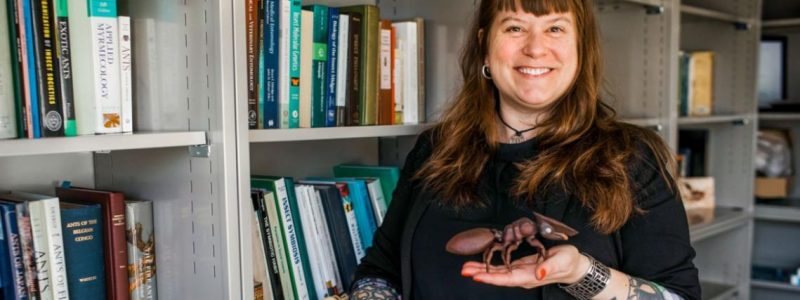By Krishna Ramanujan
As director and head curator of the Cornell University Insect Collection, Corrie Moreau has numerous tasks on her to-do list, including one that could last her entire career: digitizing the collection’s 7 million specimens.
Digitization is a national trend, supported by the National Science Foundation, to eventually link biological collections across the country through a network of searchable databases, making species data available on exponential scales from the comfort of a scientist’s office.
Cornell’s collection, established in 1871, boasts 200,000 species (about 25% of all insect species), making it the seventh-largest in the world and the biggest at a land-grant university. Its strengths include lepidoptera (butterflies and moths); dragon flies, including some of the oldest specimens ever collected; and a growing ant collection.
Moreau, colleagues and student workers now face the daunting task of databasing specimen records and taking high resolution images and making those available in real time through public repositories online.
Moreau, the Martha N. and John C. Moser Professor of Arthropod Biosystematics and Biodiversity, was hired in 2019 in part to unlock the potential in the Cornell collection by ensuring that scientists the world over can access its resources.
“Our large historical collection not only contains specimens from 150 to 200 years ago, it has been constantly added to, up to the present,” Moreau says. “This gives us powerful tools to ask questions about how species evolved, how they change and what are the impacts from the environment and humans.”
An ant expert, Moreau has spent her career working in natural history collections – as an undergraduate and master’s student at San Francisco State University, a doctoral student at Harvard University, a postdoctoral researcher at the University of California, Berkeley, and in her previous faculty position as director of the Integrative Research Center at the Field Museum of Natural History in Chicago. Her own research unites genomic DNA and microbiology to get a richer picture of how ants have been so evolutionary and ecologically successful.

